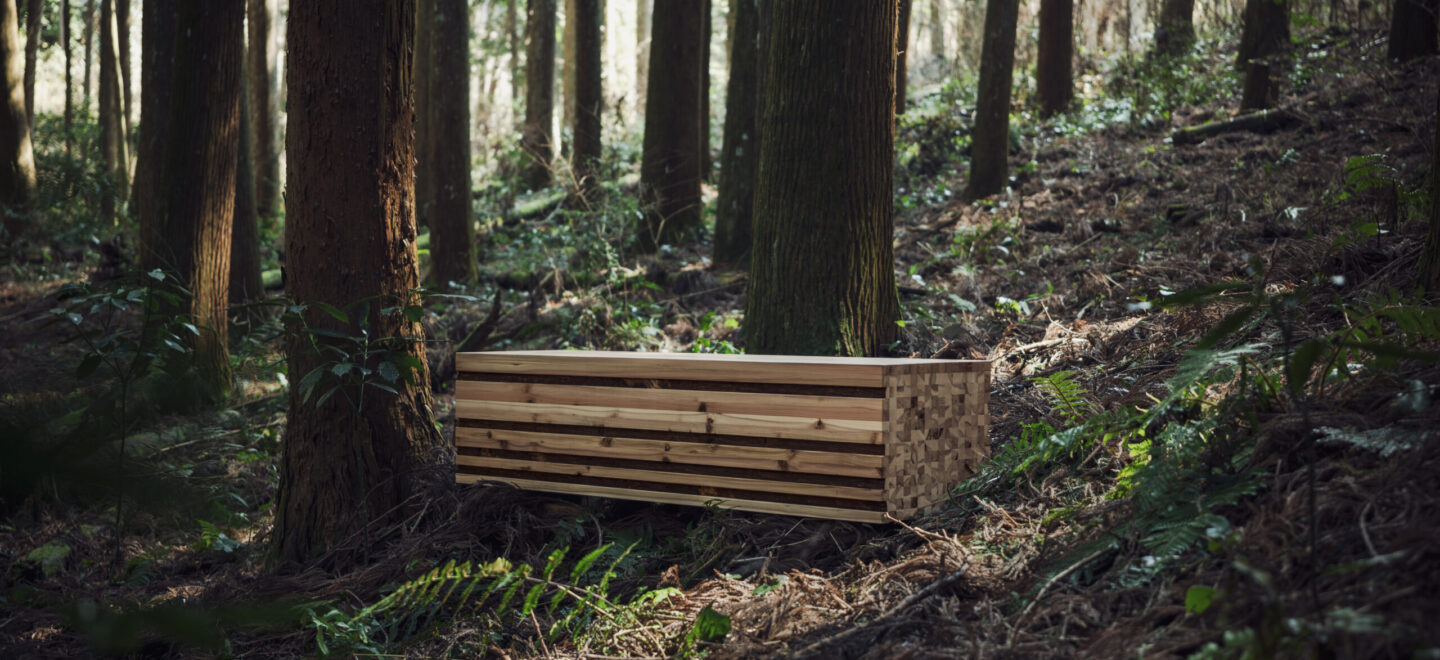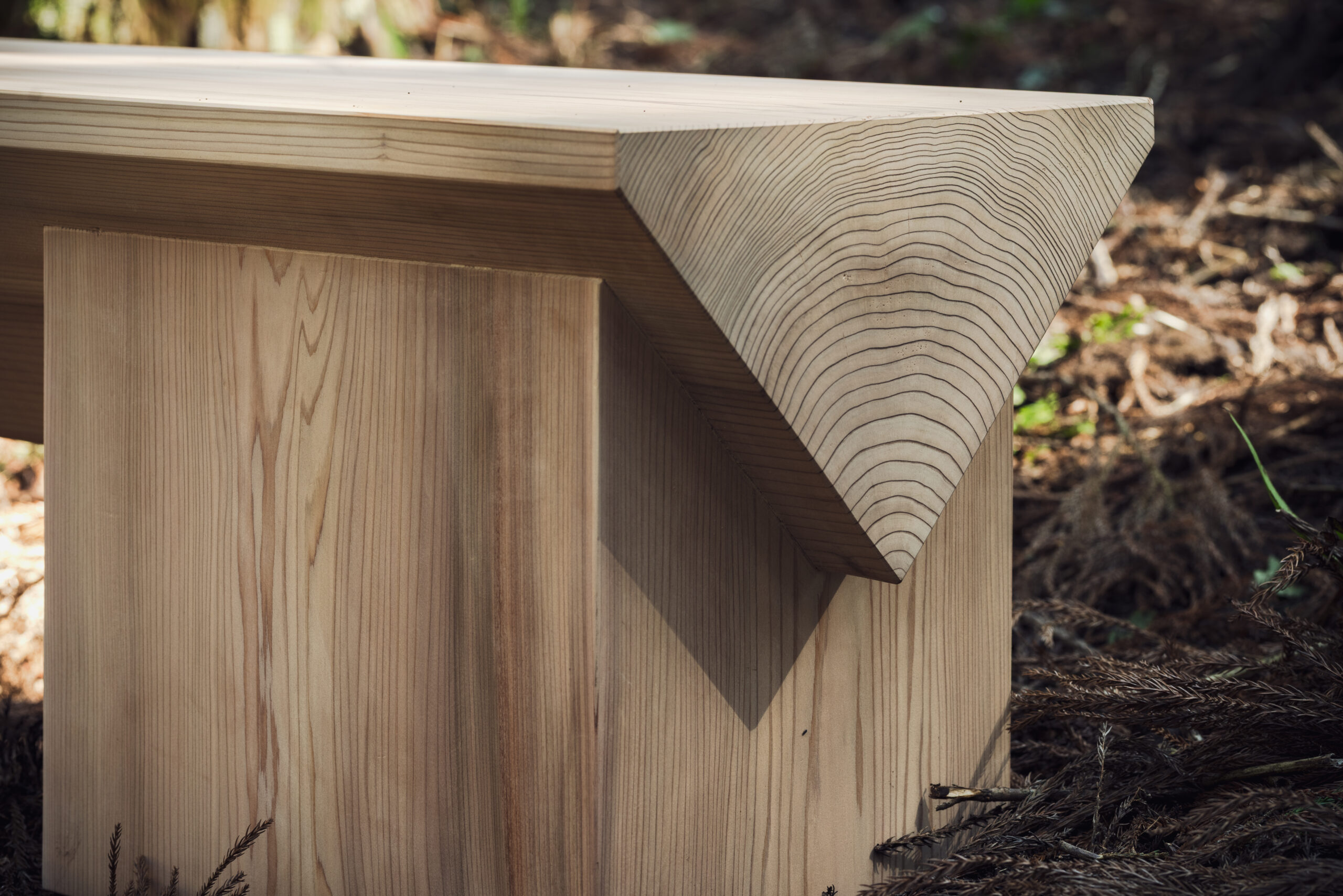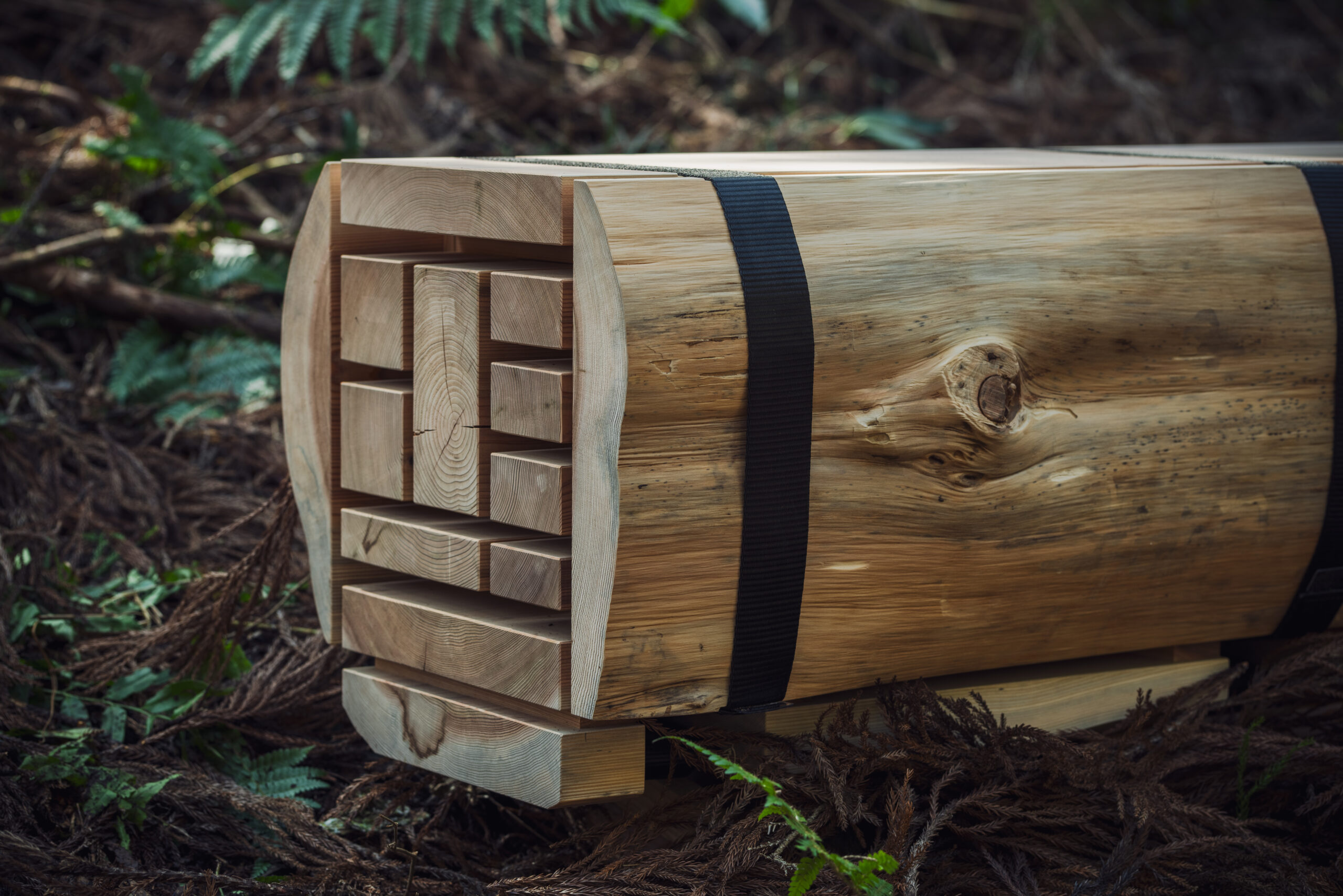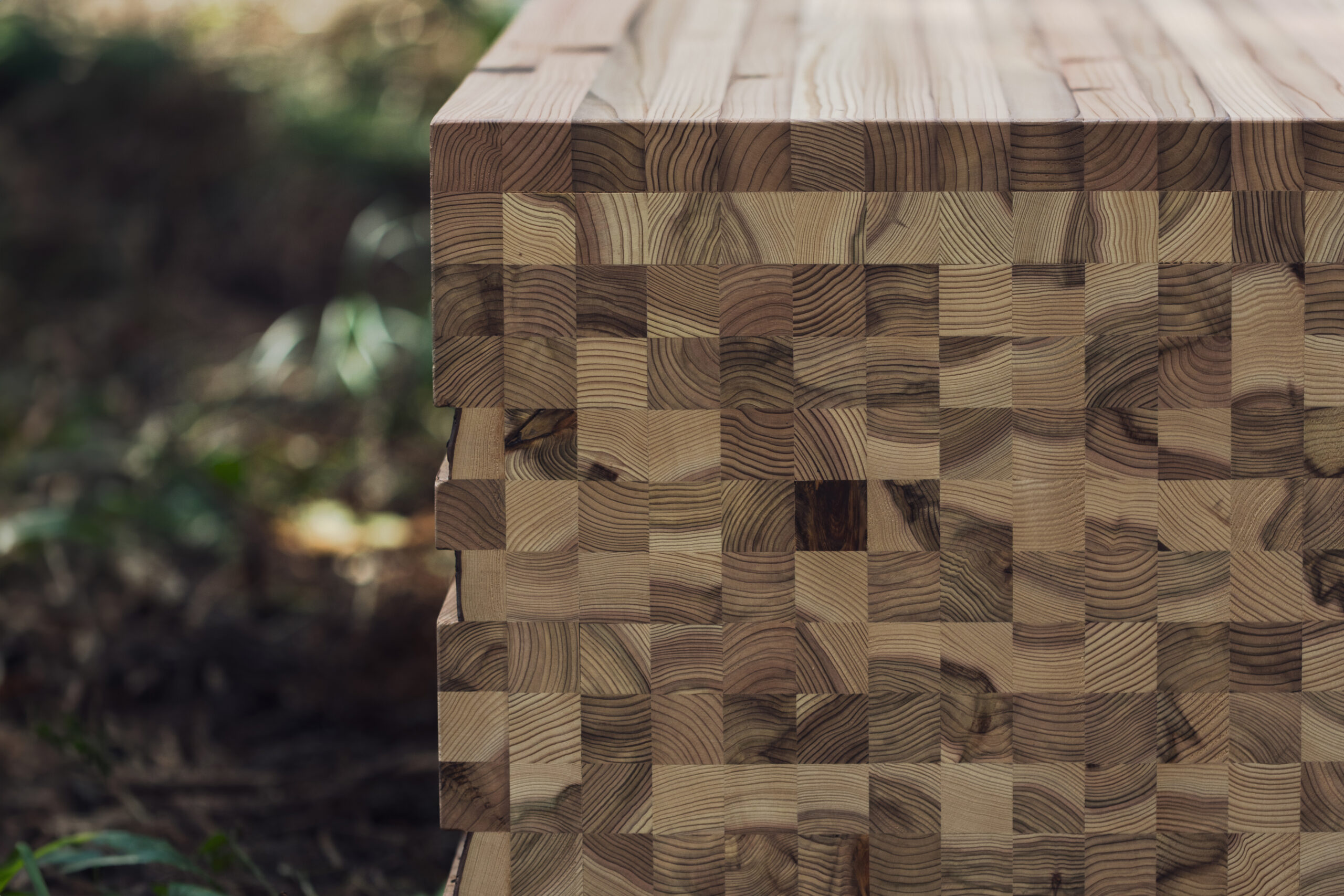

Type B
New possibilities from non-uniform wood
TITLE
「C/D Bench」
‘C-grade timber’ refers to wood with visible knots or stains, while ‘D-grade timber’ is felled wood left unused in the forest. This bench reimagines such materials not as flaws but as character. Each piece is individually selected and assembled, embracing variations in grain, colour, and texture to celebrate the unique qualities of these underutilised timbers.
Designed by
Tatsuno Shizuka

DESIGNER’S PROFILE
She graduated from Kingston University in London with a Product & Furniture Design degree and gained experience at a design studio before becoming independent in 2011. In 2017, she established Shizuka Tatsuno Studio Inc. She specializes in exploring the hidden potential of things and transforming them into tangible designs, thus creating a diverse range of works, from practical tools to emotive pieces. Her focus goes beyond visual beauty and forms; she is also deeply involved in shaping the core brand concept and product planning. Her approach emphasizes simple expressions that reflect the project’s key concepts. Her work extends beyond conventional boundaries, encompassing various fields around product design, including art direction, exhibition space design direction, and art production.
Designer’s Reflection
Through this project, I had the opportunity to speak with people involved in the timber industry, and I learnt that wood is graded from A to D. Among these, “C” and “D”-grade timber are rarely used for products due to various factors—such as their appearance, difficulty in processing, and lower profitability.
“Could the distinct features of C/D-grade timber be appreciated as something beautiful?”
This question became my starting point. By embracing the knots, uneven colouration, and stains typical of these grades, I explored how their individuality could be highlighted. By breaking down and reassembling the timber, I sought to create a design that brings out its raw, powerful beauty—while still harmonising with simple, modern spaces.
The name “C/D Bench” reflects the desire to reconsider the overlooked value of these timbers, and to use the Omou Bench as a medium for sharing the potential and character of such materials. I hope this approach encourages a renewed respect for the individuality of each tree and supports the idea of sustainable forestry for generations to come.
Process of Creation
2024.4-2025.3
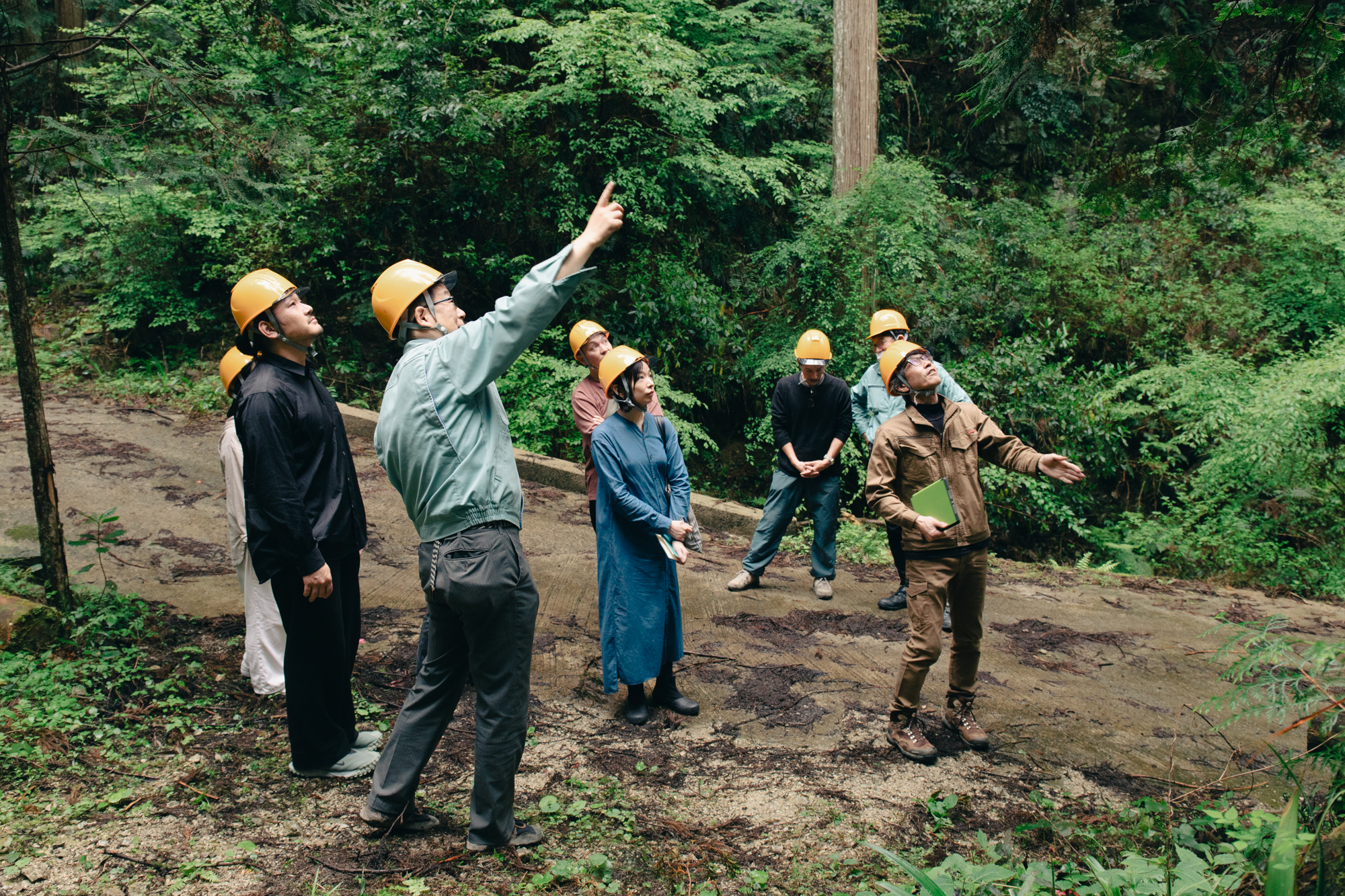
Shortly after the project began, we visited a forest in Minami-Kawachi, Osaka. Experts from the local forestry cooperative and forestry professionals guided us. They explained that timber with many knots, curves, or signs of decay is typically turned into wood chips.

During the initial concept sketch phase, Tatsuno learnt that C/D-grade timber tends to have uneven tones and stains compared to A/B grades—one reason it is considered harder to use. This prompted her to take a different approach: to focus on colour. She hypothesised that by segmenting the timber and arranging it into a gradient, she might reveal a previously unseen beauty unique to C/D-grade material.
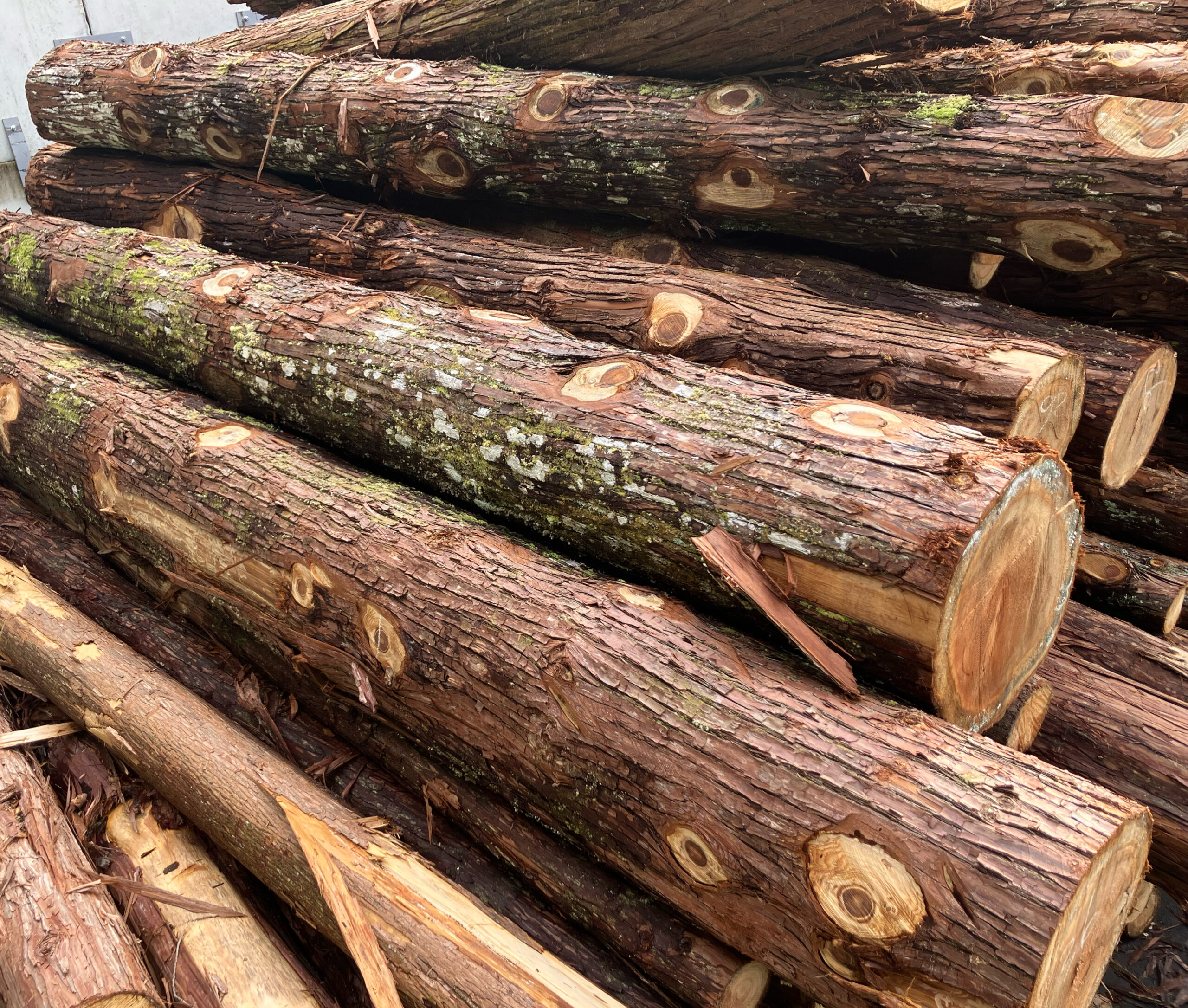
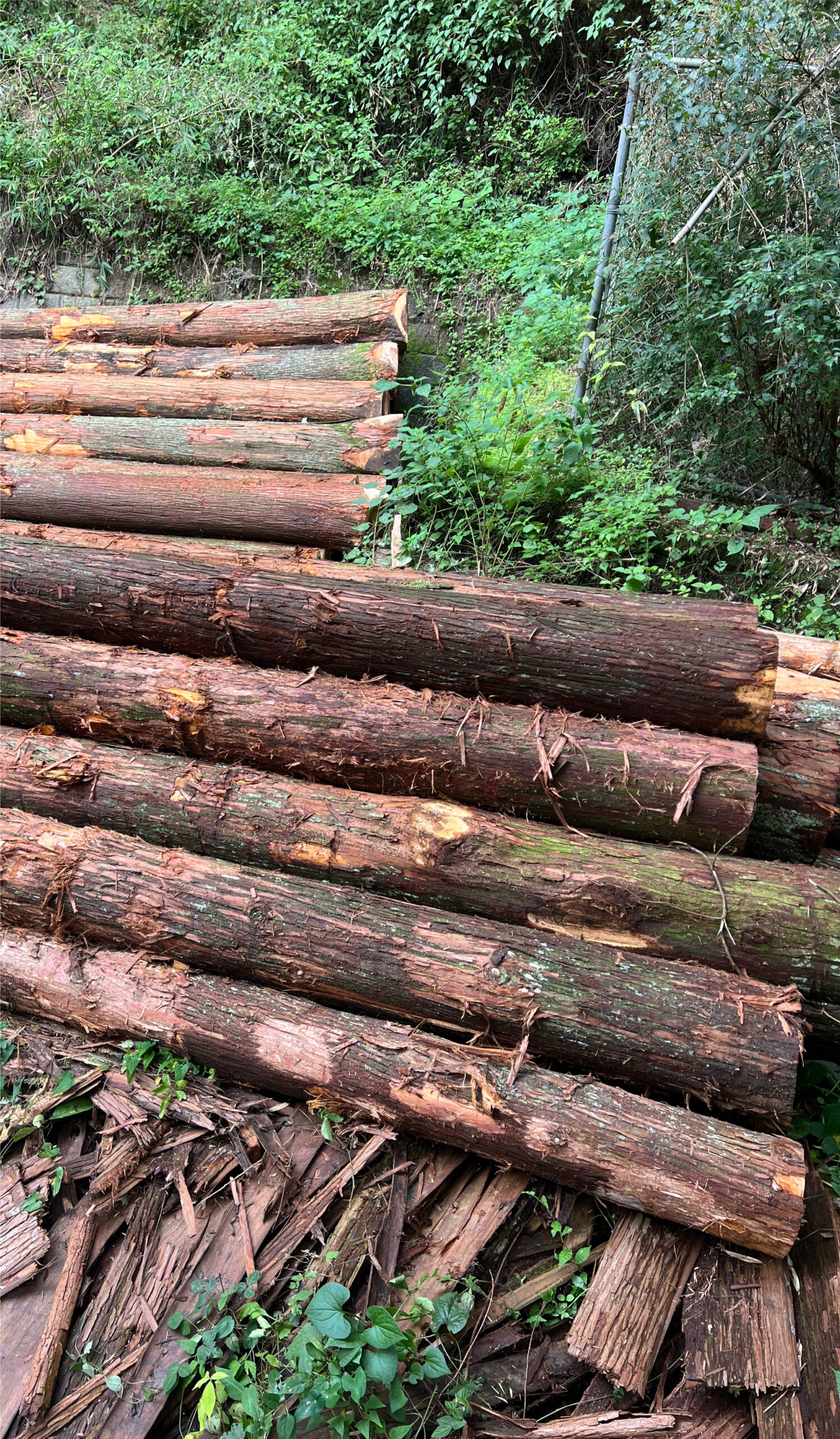
Based on this concept, we decided to use C-grade cedar (Photo 01) from the log market in Chihaya Akasaka Village, and D-grade timber (Photo 02) that was due to be left behind in the forest following a felling operation in Minami-Kawachi.
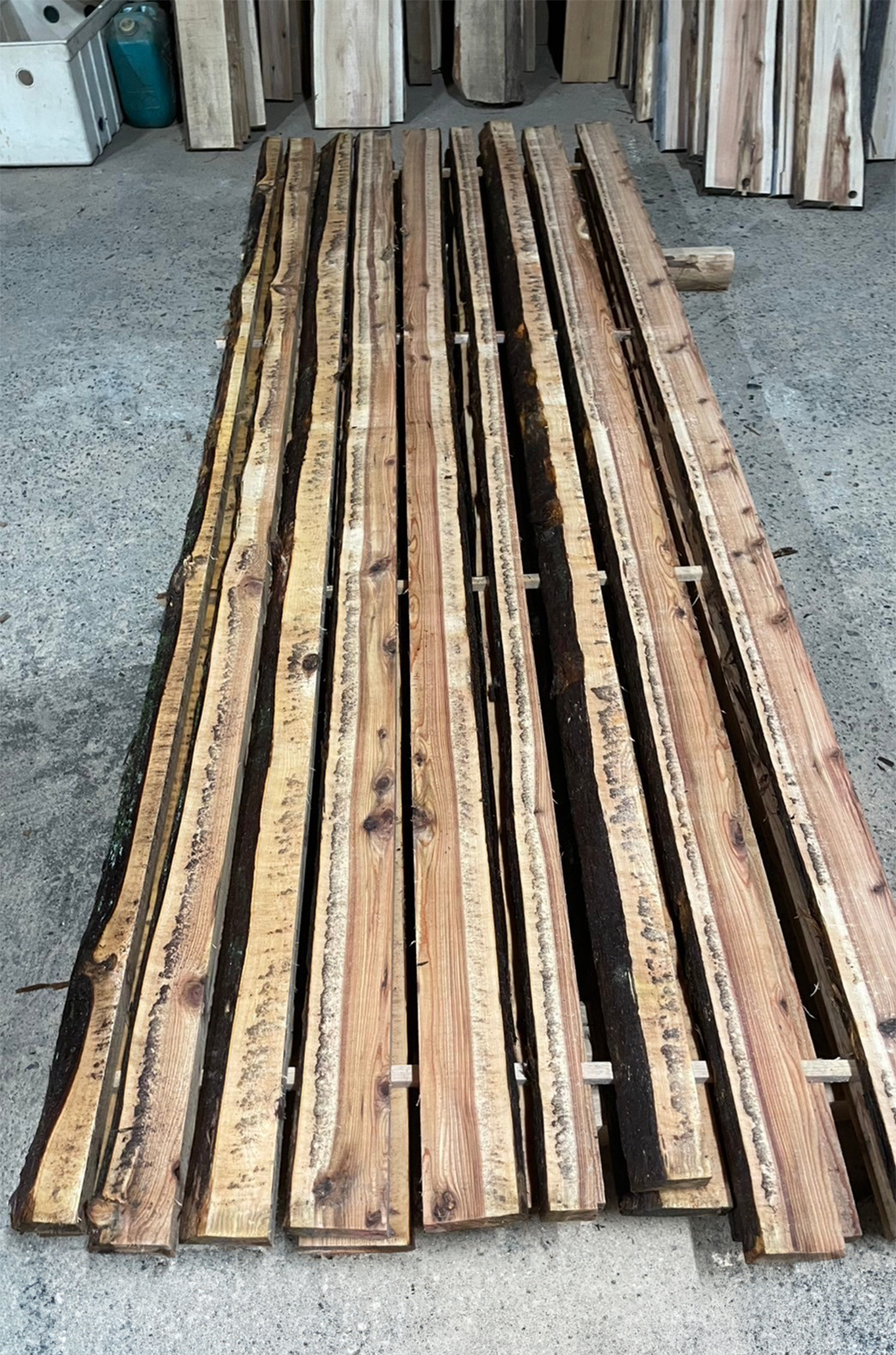
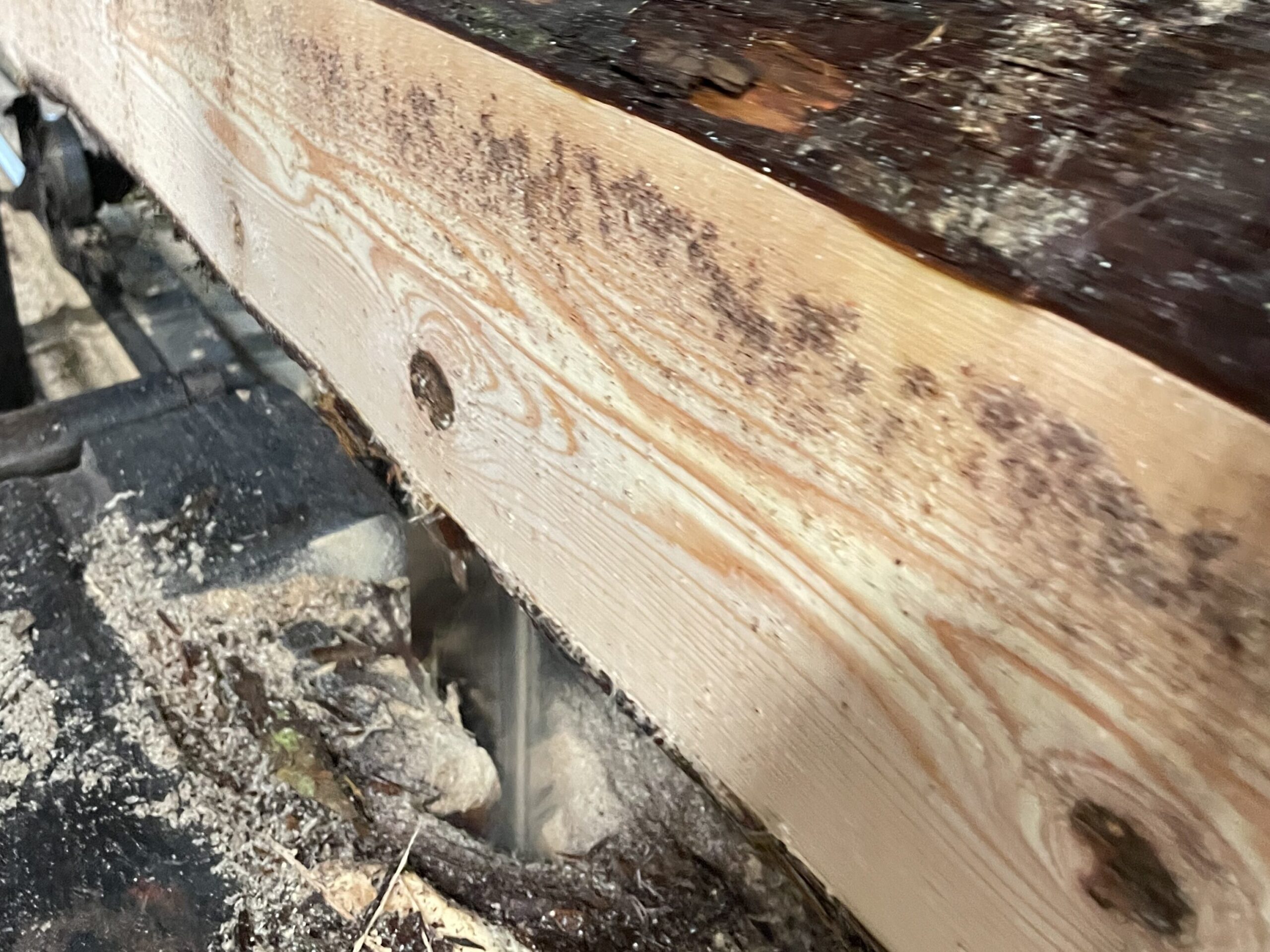
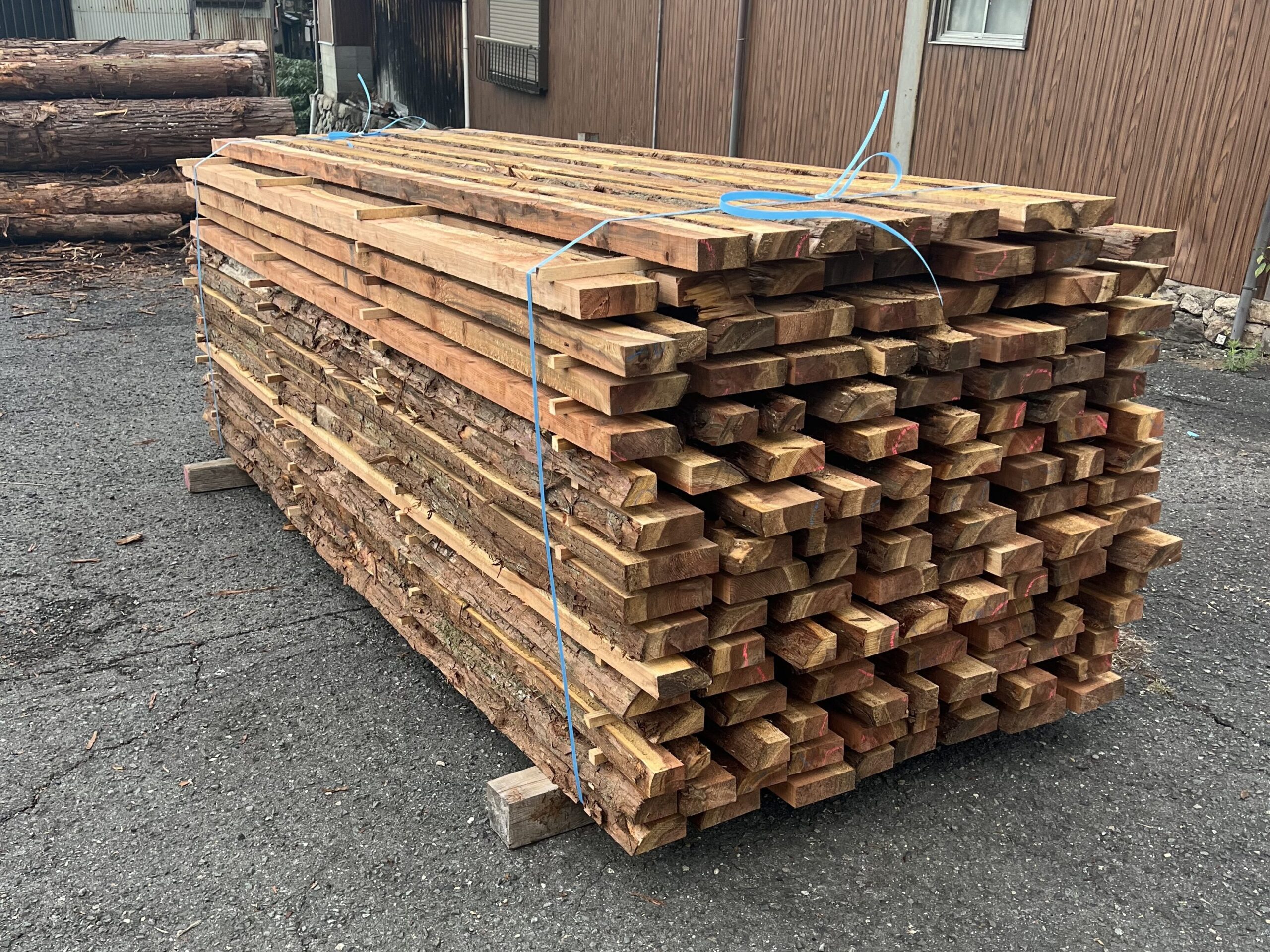
01–03: These images show the freshly sawn timber, cut at Tanaka Sawmill. After this stage, the timber was dried for two weeks.
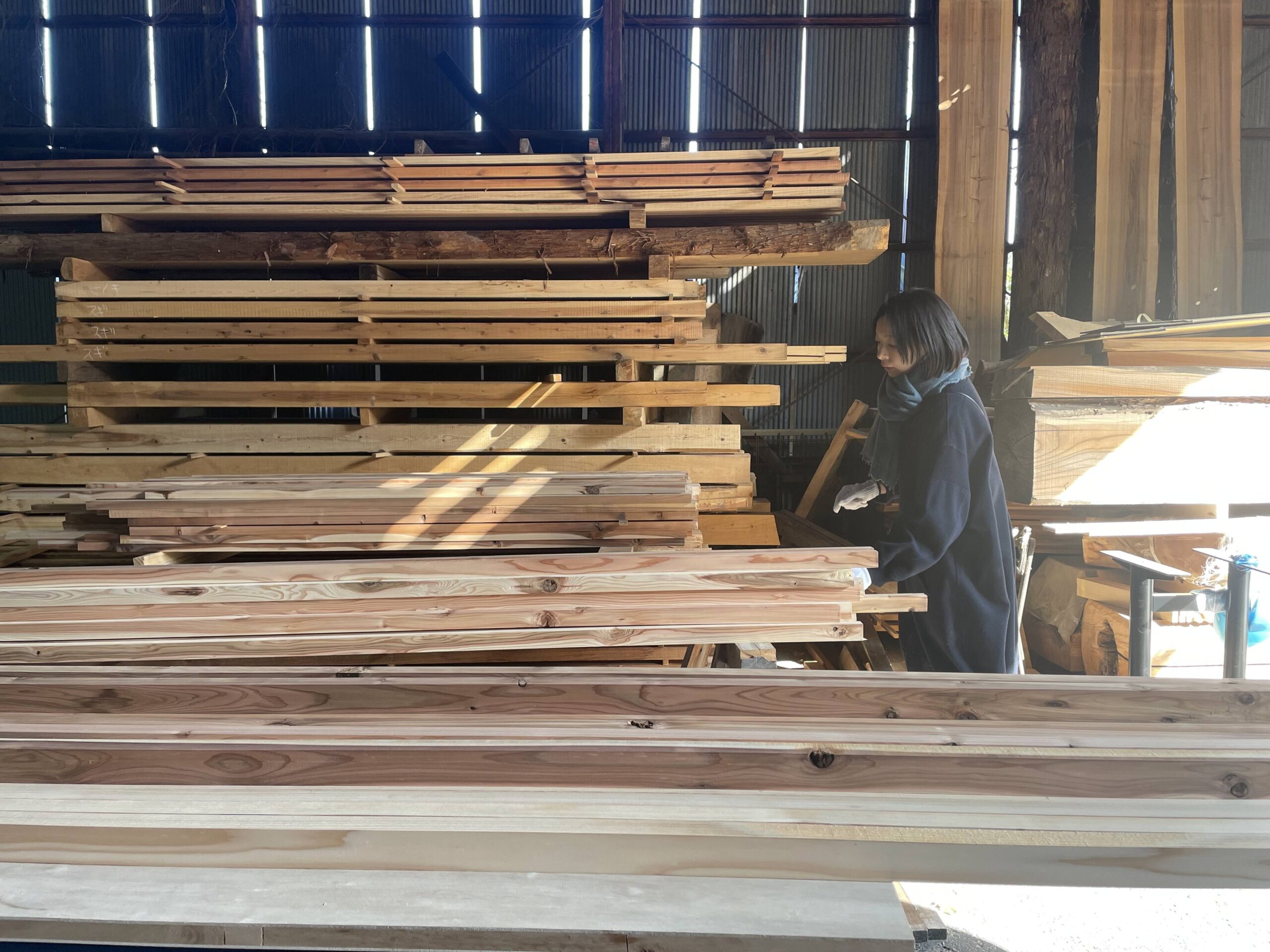
Following the drying process at Tanaka Sawmill, we inspected the results. The wood used in this instance showed limited colour variation, making the gradient concept difficult to pursue. Instead, Tatsuno adjusted her approach and focused on showcasing other traits of C/D timber. Piece by piece, she handpicked each board based on grain, colour, and the placement of knots.
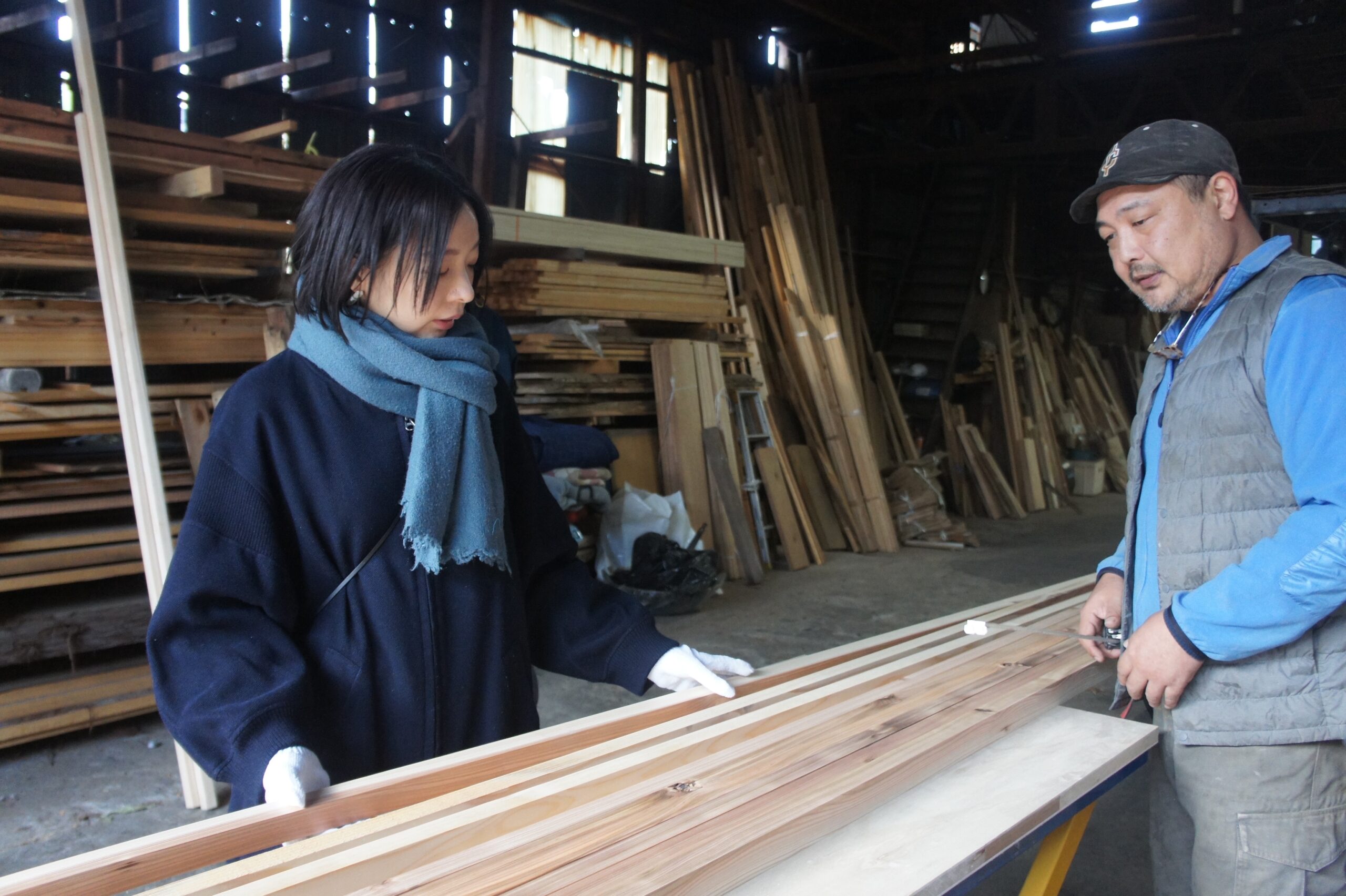
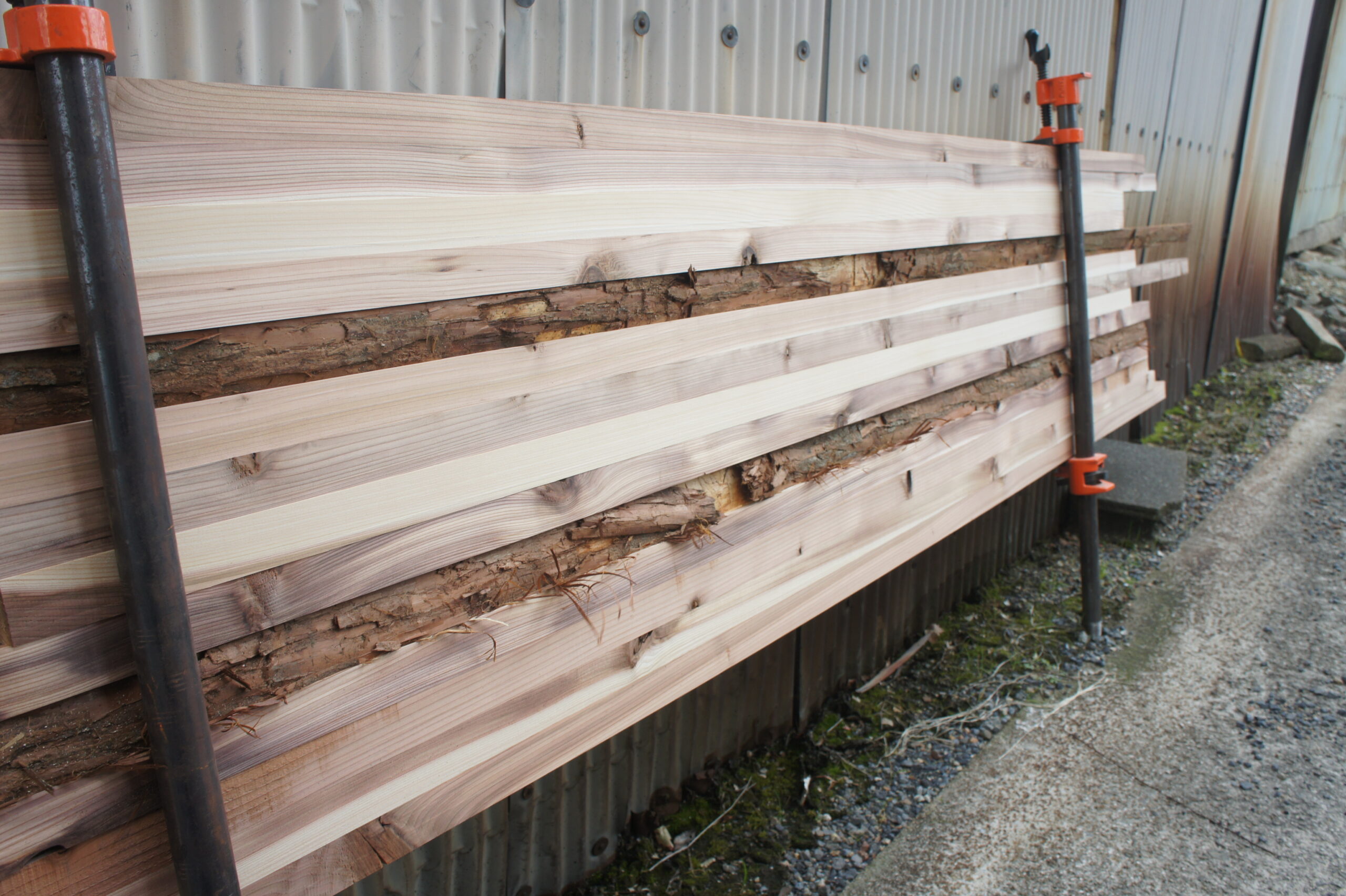
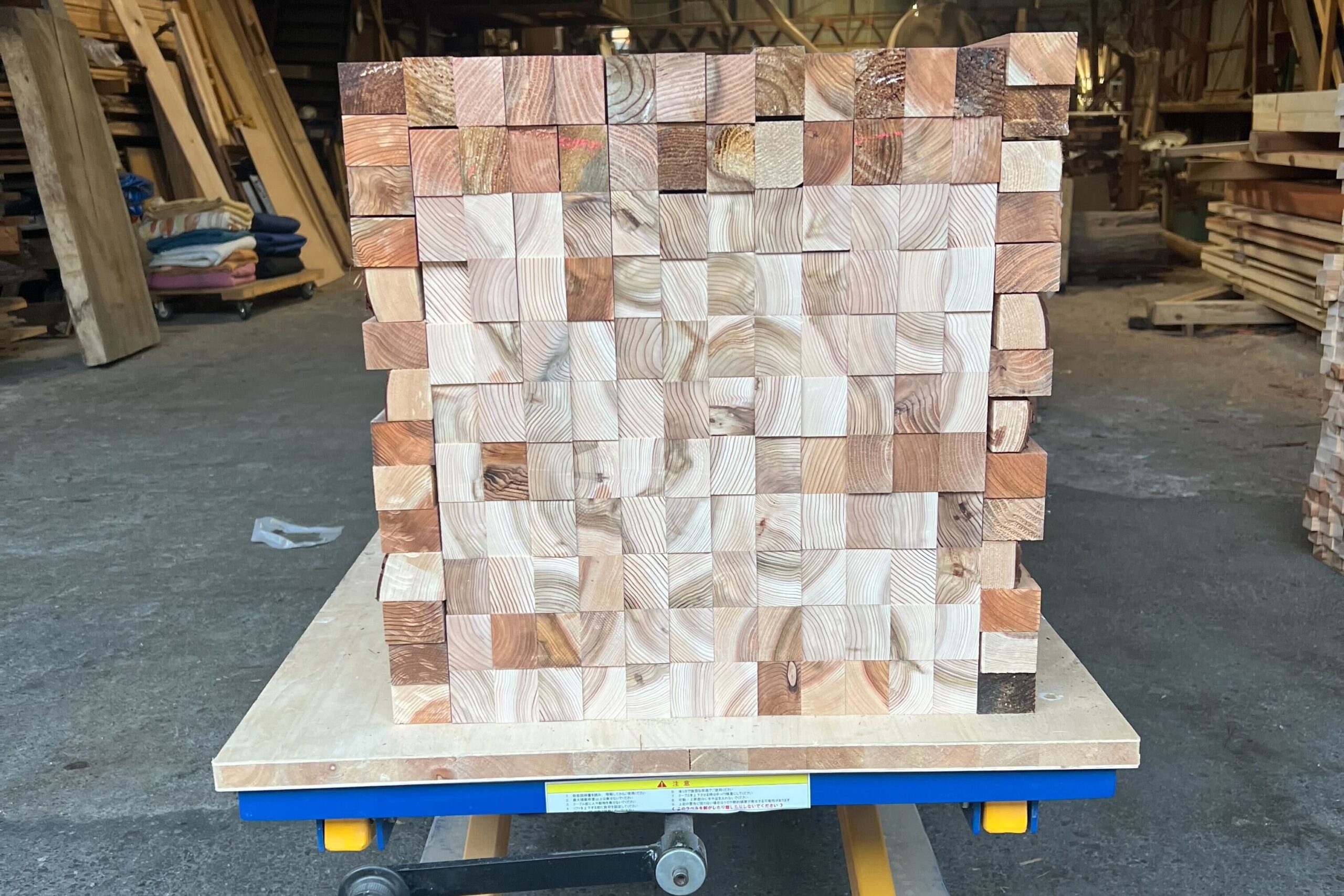
01:Working closely with Hattori Tomoki of graf, Tatsuno reviewed the combinations as they assembled them. 02: She also experimented with including bark—its rawness helped highlight the unique nature of the C/D-grade material. Ultimately, she adjusted all benches to follow this direction. As Tatsuno reflected, “This process allowed me to confront the beauty of C/D timber in a new way—it was a valuable learning experience. I feel that responding to each tree’s uniqueness in real-time opens up new paths for timber use. Looking ahead, I believe that with the help of advanced technologies, this mindset could inspire future developments in industry and design.” 03: A side view of the bench during development. She considered a more textured, irregular form, but ultimately opted for a flatter finish to align with the clean aesthetic of the Expo venue.
Other Benches

